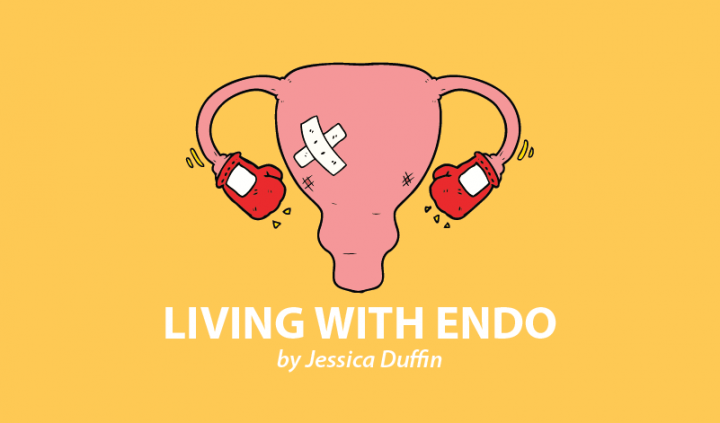How do you navigate eating for endometriosis at Christmas?
Thanks to a rise in health food trends, it’s actually becoming easier every year. If you like cooking, there’s even more of an opportunity to tailor your Christmas Day menu to your needs.
Eating for endometriosis looks different for everyone; some people do well on a gluten-free diet, others feel better without dairy, and some prefer a low-FODMAP diet. Generally, an anti-inflammatory diet can help reduce symptoms of this inflammatory disease. Of course, healthy foods can be inflammatory if you are personally sensitive or intolerant of them, which is why it’s important to figure out your own triggers.
A low-sugar diet is usually one of the most effective places for my clients and me to start. Many of the people I work with also feel better on a diet that is lower in dairy, processed foods, gluten, caffeine, trans fats, and alcohol.
This year, my period is due the day after Christmas. This would normally mean that I spend the week beforehand eating a diet rich in vegetables and protein, and go easier on starchy carbs, as they can trigger blood sugar spikes and inflammation. I also avoid all my triggers, such as gluten and sugar. Following this kind of protocol enables me to have pain-free or low-pain periods.
However, this will be my first year spent alone with my partner, and I don’t want to completely rule out celebrating with some of my favorite Christmas foods. So, we’ve created a Christmas Day menu that sits comfortably in the middle of endo-friendly and wonderfully traditional. I hope this column gives you some inspiration for creating your own version.
Breakfast
This year, we want to indulge our sweet tooth a little, so we’re baking a batch of cinnamon buns. Normally, I’d avoid gluten, but we have yet to find a recipe for Swedish cinnamon buns that works well without it.
In the past, we’ve made gluten-, sugar-, and dairy-free cinnamon buns with stevia, inulin syrup, coconut oil, and plant-based milk, but gluten-free flour has often left them quite tough. As a compromise, we’re going sugar- and dairy-free, but are using spelt flour, which is naturally lower in gluten than wheat flour. We’ll be adapting this recipe.
Christmas lunch
I don’t eat meat, so vegetables, stuffing, and roast potatoes are really the stars of the show.
I have my own classic, gluten-free, and meat-free stuffing recipe I adapted from this recipe. It tends to double as a stuffing and a centerpiece.
For the potatoes, we use avocado oil and odorless coconut oil rather than a more inflammatory oil such as sunflower. We sprinkle gluten-free flour on the potatoes to crisp up the edges.
As is my standard protocol for balancing my blood sugar, half of my plate will be filled with vegetables. We’ll be making our own braised red cabbage, which will be cooked with inulin syrup rather than sugar, roasted Brussels sprouts, steamed peas, and roasted carrots and parsnips flavored with thyme, rosemary, and a light orange glaze.
We also make our own pigs in a blanket with carrot “bacon” and mushroom “sausages.” Meat that is processed and conventionally farmed tends to cause inflammation, so if you do eat meat, opt for grass-fed, organic, and wild if you can, and ideally, nitrate-free, too.
Dessert
We knew that if we made a giant dessert we would just eat the whole thing, which probably wouldn’t bode well for my symptoms. So, we’ve decided to make three mini-desserts that we can enjoy throughout the festive period.
We’re going to make each dessert sugar-free, with the exception of a small amount of fruit. We will be using ingredients such as almond and hazelnut flour, organic, pasture-raised eggs, almond milk, stevia, and inulin syrup. The desserts are:
- Mini plum and hazelnut cake, dusted with stevia icing sugar and served with homemade cashew vanilla ice cream (also sugar-free)
- Mini chocolate cake served with poached pear, chocolate sauce, and ice cream
- Mini apple crumble tarts with homemade sugar-free cashew custard
Clearly this is a lot of nuts, which is why I’m going for mini servings. As someone with small intestine bacterial overgrowth (SIBO), I can respond badly to large quantities of nuts. It’s not something I will fully address until I start my SIBO diet post-treatment, but I at least want to be mindful of it.
I tend to use nuts in baking rather than refined gluten-free flours to keep my blood sugar levels stable. But if you can’t eat nuts, oat and rice flours make good cakes.
***
Note: Endometriosis News is strictly a news and information website about the disease. It does not provide medical advice, diagnosis, or treatment. This content is not intended to be a substitute for professional medical advice, diagnosis, or treatment. Always seek the advice of your physician or other qualified health provider with any questions you may have regarding a medical condition. Never disregard professional medical advice or delay in seeking it because of something you have read on this website. The opinions expressed in this column are not those of Endometriosis News or its parent company, BioNews, and are intended to spark discussion about issues pertaining to endometriosis.

